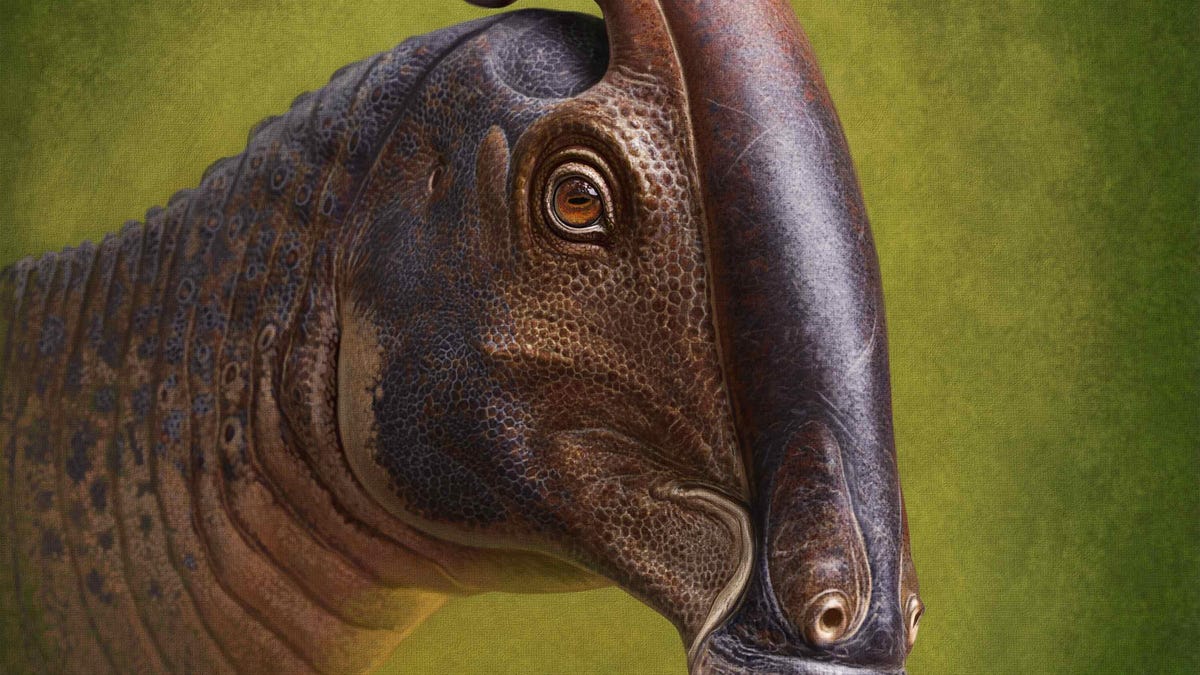Skull of rare dinosaur sheds light on creature's bizarre hollow head tube
The duck-billed dinosaur Parasaurolophus is best known for the tube that grows out of its head, and the well-preserved skull offers more clues about the crest's evolution.

A reconstruction of the head of the Parasaurolophus cyrtocristatus based on newly discovered remains.
A spectacularly preserved partial skull belonging to the rare dinosaur species Parasaurolophus cyrtocristatus has been discovered and analyzed for the first time in 97 years.
The skull, detailed in a new study in the journal PeerJ, shows off the intact structure of the creature's signature tube-shaped nasal passage, offering new clues into the evolution of the bizarre crest, a subject of debate among paleontologists for decades.
"My jaw dropped when I first saw the fossil," Terry Gates, a paleontologist from North Carolina State University and lead author of the paper, said in a statement Monday. "I've been waiting for nearly 20 years to see a specimen of this quality."
The tube-like crest had an internal network of airways for breathing, but it could have also been used for communicating.
"Over the past 100 years, ideas for the purpose of the exaggerated tube crest have ranged from snorkels to super sniffers," said David Evans, vice president of natural history at the Royal Ontario Museum. "But after decades of study, we now think these crests functioned primarily as sound resonators and visual displays used to communicate within their own species."
Here's a closer look at the skull of Parasaurolophus as originally exposed in the badlands of New Mexico.
The partial dinosaur skull was discovered by Smithsonian ecology fellow Erin Spear in 2017 while Spear explored northwestern New Mexico as part of a Denver Museum of Nature and Science team of paleontologists.
The three species of Parasaurolophus currently recognized have been found in dig sites from Alberta, Canada, all the way to New Mexico, in rocks that date back between 77 million and 73.5 million years.
This is a reconstruction of a group of Parasaurolophus dinosaurs crossing paths with a tyrannosaurid in the subtropical forests of New Mexico, 75 million years ago.
The new study found for the first time a way to connect the tube-crested dinosaur species found in southern North America to the northern species found in Alberta, Canada. The skull specimen shows that the dinosaur's crest was formed much like the crests of other, related duck-billed dinosaurs.
"This specimen is a wonderful example of amazing creatures evolving from a single ancestor," said Joe Sertich, curator of dinosaurs at the Denver Museum of Nature and Science and the leader of the team that discovered the skull.

